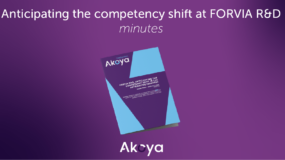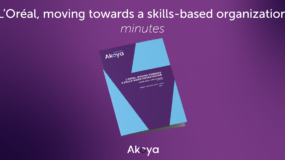People Analytics & HRIS
Volume, Speed, Variety: Big Data and its 3Vs reveal a wide range of opportunities. Even if the HR function cannot yet boast of handling petabytes of data, it has much to gain by professionalizing the management of existing data: increased credibility with its stakeholders and better management of its activities. Equipping yourself with a high-performance HRIS fed with reliable information is the first step in developing HR data self-service and opening the door to People Analytics.
Structuring HR data
Before talking about Big Data, or even People Analytics, it is important to consider the quality, security and access to HR data within and outside the function. Incomplete, or worse, false data leads nowhere in terms of analysis. Just as data that is lost in the back of servers, or is difficult to access, does not meet the recurring HR data needs of other functions (e.g. strategy, finance, purchasing, controlling). As the owner of this data, the HR function must seize this issue of structuring and making it available
Choosing the right HRIS
The choice of an appropriate HRIS is crucial. From exhaustive specifications that attempt to capture the specificities of all HR processes to a summary of a few use cases that are particularly critical for the company, there is a wide range of possibilities for selecting the right tool. Opting for pragmatism and simplicity is often a key success factor.
Adapting your company culture
Once the HRIS has been chosen, change management and, more generally, taking the cultural factor into account are two key factors for successful implementation. And from the moment the system is being configured, the integration of the teams in the reflection process is a key success factor for the future adoption of the new tool. Adoption is the foundation on which the future data culture of the HR function will be built.
Testing for better measurement
In parallel to this fundamental work, launching the first People Analytics PoCs allows to give meaning, to create adhesion and to avoid the teams’ breathlessness. The best way to prioritize PoCs is to identify a business problem that can be studied and partially solved by People Analytics: high absenteeism or turnover, lack of collaboration, measuring the performance of a new work rhythm…
Gradually, as the company becomes more mature about HR data issues, PoCs can be deployed on a larger scale and new algorithms integrated into the HRIS (e.g. calculation of the probability of all employees leaving).
Camille Raffin
Manager
Predictive analytics and HR data
How to predict the retirement age of your employees using HR Analytics?
Discover the caseAssisting in the digitalization of HR for a major player in the beauty industry
How to prepare and anticipate a transformation of your HR function on the occasion of a new HRIS?
Discover the caseThe use of HR data within a large group
How to structure and improve access to HR data?
Discover the caseContinuous improvement of the employee experience
How to constantly improve the employee engagement?
Discover the case



